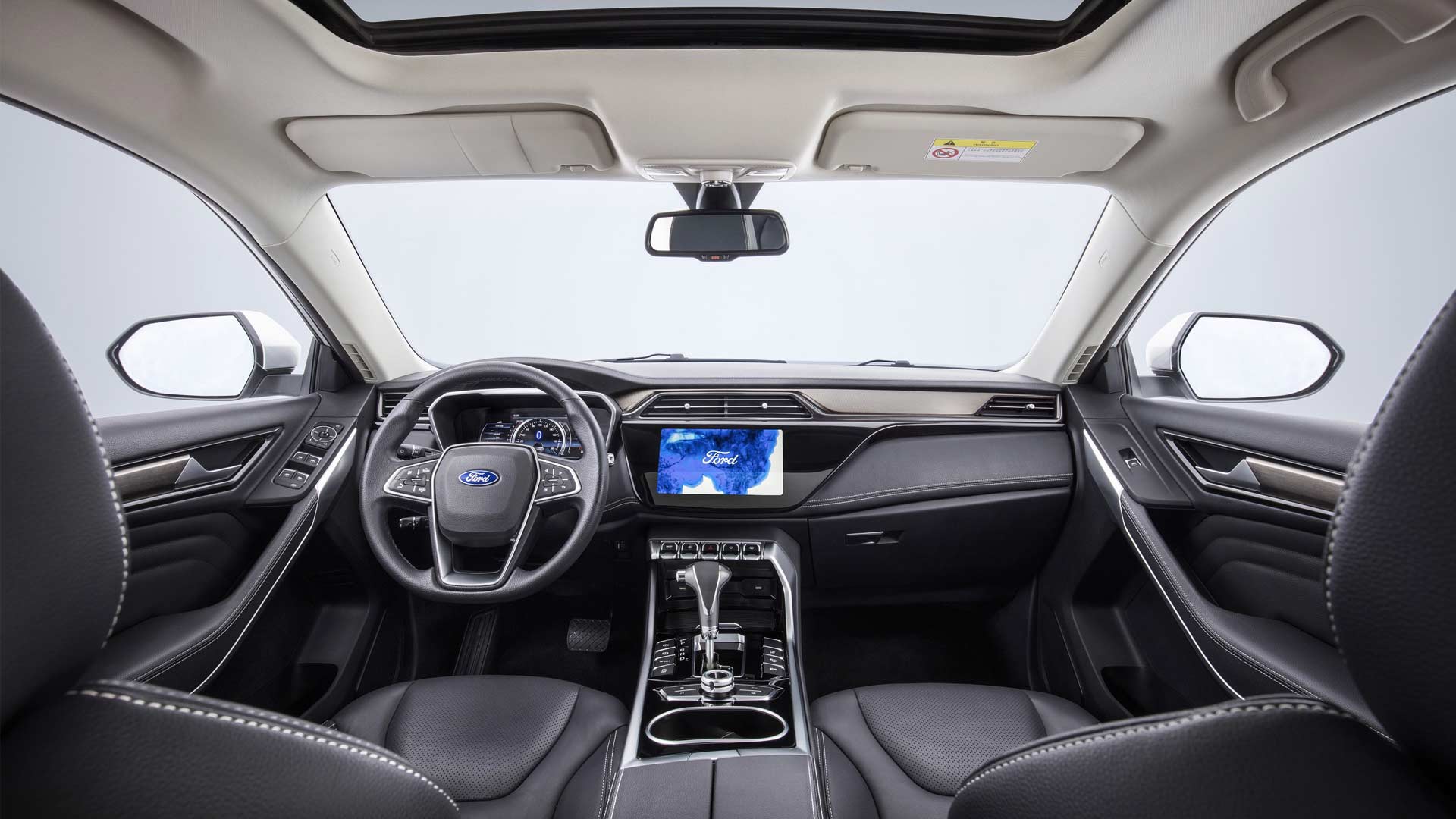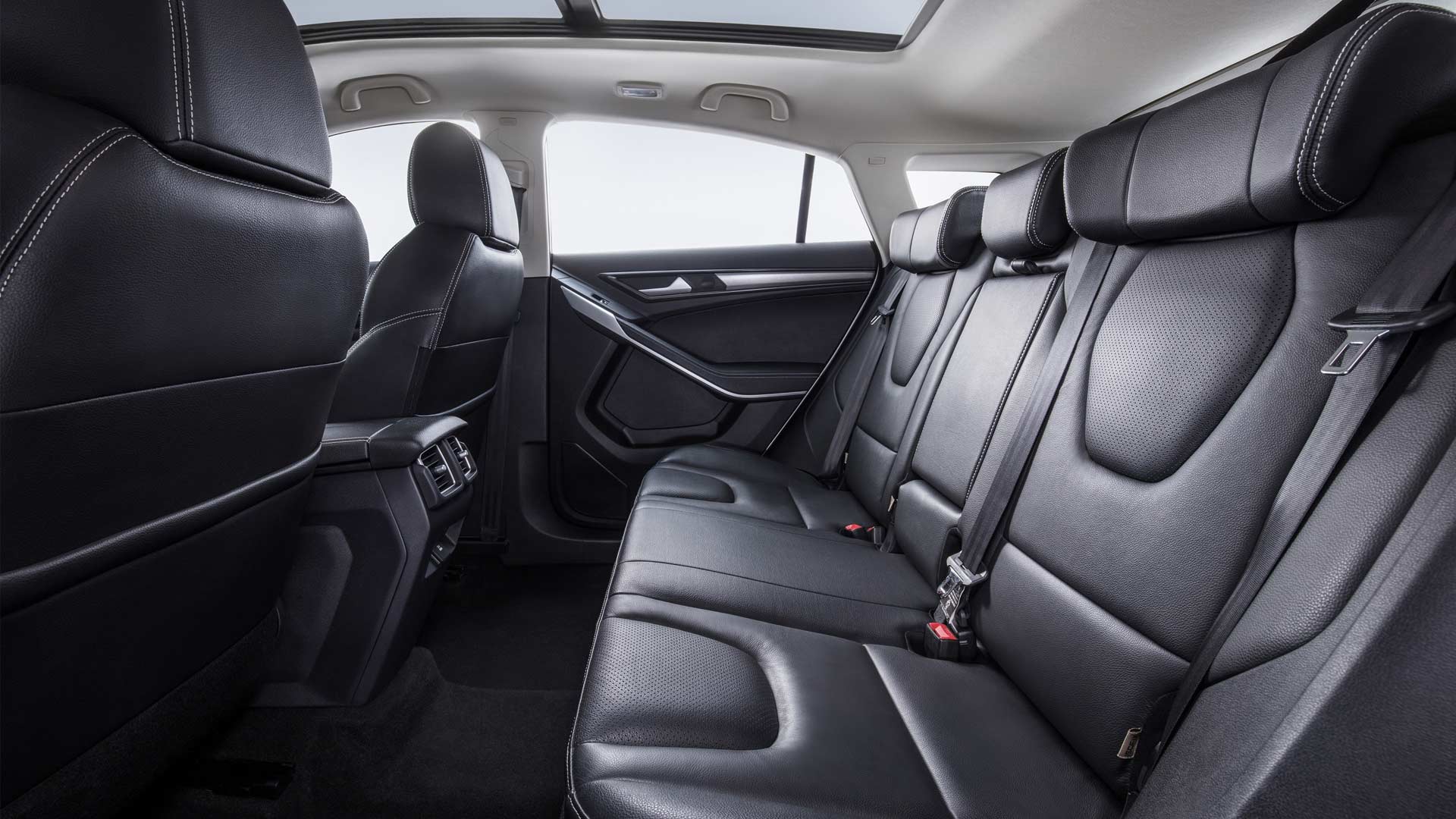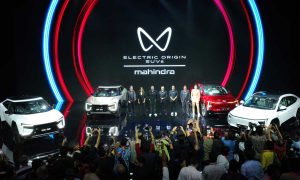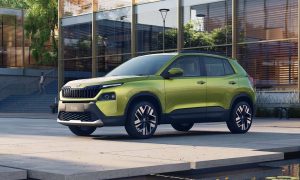Ford has shared a few pictures of a new mid-size SUV christened Territory, developed in association with Jiangling Motors Corporation (JMC) and as per Chinese customers’ tastes. The nameplate was previously used for the Australian market.
On the exterior, the SUV features a fresh design with hexagonal family grille, LED headlights and bumper-mounted LED daytime running lights and turn signals. While we don’t have more photos just yet, the rear-end apparently features strong horizontal lines, emphasizing the width and stance. A lower skid plate serves as a reminder of the Territory’s SUV capability.

The interior has a fresh layout too with the centre section angled slightly towards the driver. The touchscreen appears to sit flush with the gloss-black console. As you can see in the photos, a large glass roof adds airiness.
More features include Mandarin voice-command function, Co-Pilot 360, a suite of Driver Assistance Technologies (DATs) which includes Adaptive Cruise Control and Pre-Collision Assist, and FordPass Connect with embedded modem.
Ford hasn’t shared too much information about the Territory yet, but the customers can choose between a fuel-efficient gasoline engine option, 48V mild-hybrid with Miller cycle technology, and a plug-in hybrid powertrain when it goes on sale in early 2019.

JMC provided insights into Chinese customers’ lifestyles and product preferences, while the Ford team leveraged its global expertise to design, engineer, and test the Territory at Ford’s testing centers in Nanjing (China) and Melbourne (Australia) for its ride, handling and NVH, the company said. The new SUV will be manufactured at JMC’s Xiao Lan plant.
The new Territory is part of Ford’s China 2025 plan to launch more than 50 new vehicles in the country by 2025. According to the plan, 15 of them are going to be new energy vehicles.
The mid-size segment
While China remains the world’s largest automotive market, the greatest growth in demand for automobiles will come not from traditional Tier 1 cities such as Beijing and Shanghai, which have implemented license plate restrictions to manage traffic congestion, but rather from smaller but fast-growing cities in the interior of the country.
According to McKinsey’s China auto consumer survey 2017, the midsize SUV segment saw an annual growth rate of 38% in China between 2012 to 2016. Indigenous Chinese automakers in particular have capitalized on this trend, the company said.

Leave a Reply
Note: Comments that are unrelated to the post above get automatically filtered into the trash bin.


































